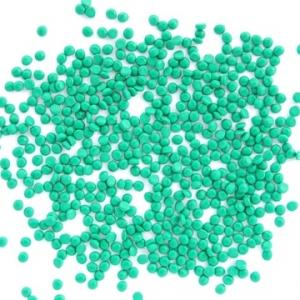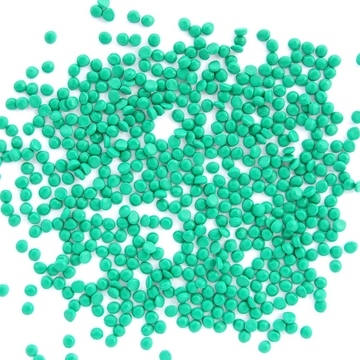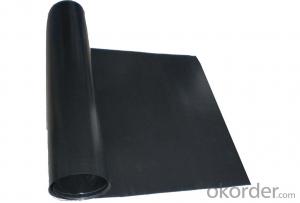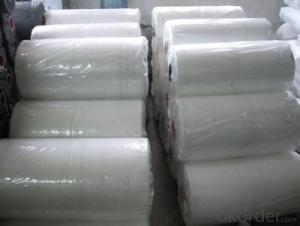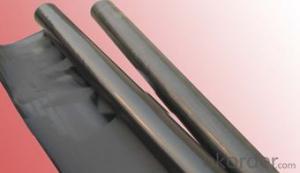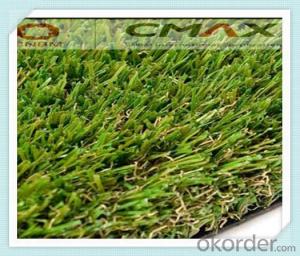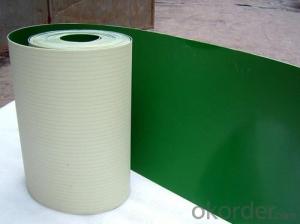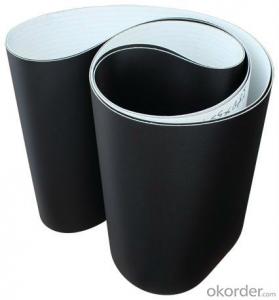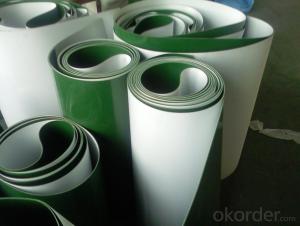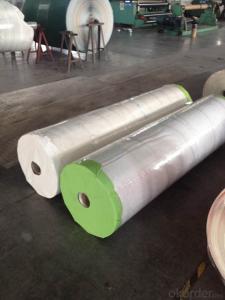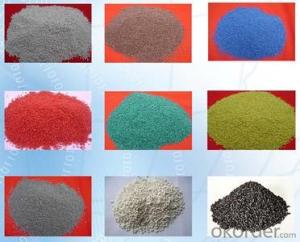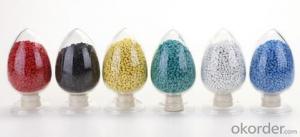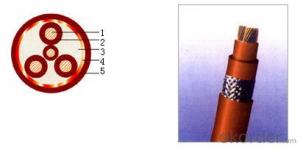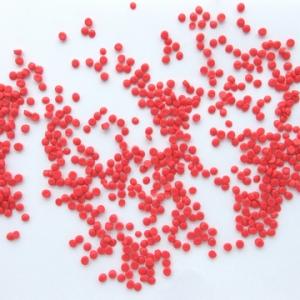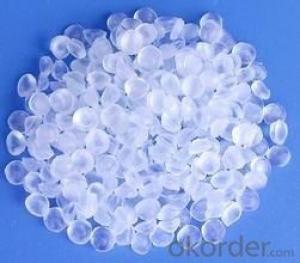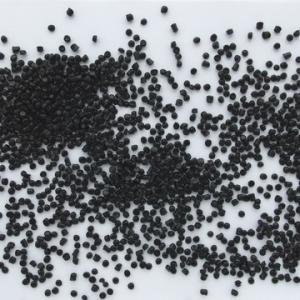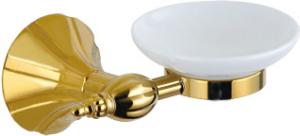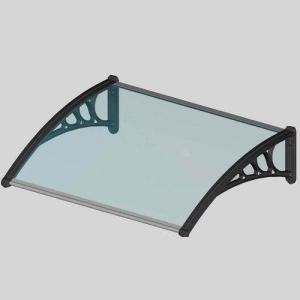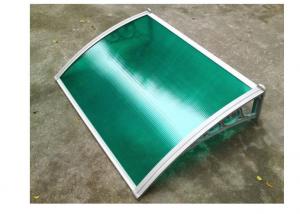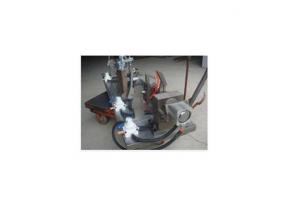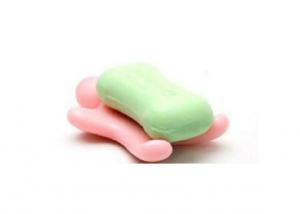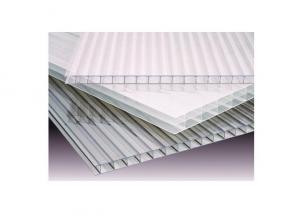High temperature Resistant PVC compound for cables
- Loading Port:
- Shanghai
- Payment Terms:
- TT OR LC
- Min Order Qty:
- -
- Supply Capability:
- 3000 Tons kg/month
OKorder Service Pledge
OKorder Financial Service
You Might Also Like
High temperatureResistant PVC compound for cables
I. Type andapplication
Type | Product | Application and Cable Specification |
2501N | 125 degree C PVC insulating compound | 125 degree C high temperature resistant PVC insulating compound for cables and wires |
2521N | 125 degree C jacket compound | 125 degree C high temperature resistant PVC jacket compound for cables and wires |
II. Product description
High temperature PVC cable compound, basedon PVC resin, is made into granules by mixing, plasticization, and granulation,adding plasticizer, stabilizing agent. The products meet various specialrequirements, such as different hardness, UV stable, environment friendly(RoHs, REACH, PAHs, chlorinated alkanes free)
III. Processing
It is recommended that compound should beprocessed with common extruder having a minimum L/D ratio of 20.
The following temperature(℃) profile of extruder is recommended:
Zone | Zone 1 | Zone 2 | Zone 3 | Zone 4 | Head | Die |
Temperature ℃ | 145 | 165 | 175 | 180 | 185 | 180 |
IV. Storageand transport
Packaging:25kg/bag, PEmembrane inside bag and Kraft outside bag.
Storage and transport: Avoiding in directsunlight and weathering. The storage should be clean, cool, dry, andventilated.
V. Properties
Table
Item | Unit | Standard Value | |
2501N | 2521N | ||
Tensile Strength | ≥ MPa | 16.0 | 16.0 |
Elongation at Break | ≥ % | 150 | 180 |
Impact Brittleness Temperature | ℃ | -15 | -25 |
Volume Resistivity, at 20℃ | ≥Ω﹒m | 1.0×1012 | 1.0×108 |
Dielectric Strength | ≥ MV/m | 20 | 18 |
Hot Deformation | ≤ % | 40 | 50 |
Thermal Stability Time at 200℃ | ≥ min | 180 | 180 |
Thermal Aging |
|
|
|
Aging Temperature | ℃ | 158±2 | 158±2 |
Aging Time | h | 240 | 168 |
Tensile Strength after aging | ≥ MPa | 16.0 | 16.0 |
Variation on Tensile Strength | % | ±30 | ±25 |
Elongation at Break after aging | ≥ % | 150 | 150 |
Variation on Elongation at Break | % | ±30 | ±25 |
Loss of Mass | ≤ g/m2 | 25 | 25 |
- Q: Can olive nets be used on trees with multiple trunks?
- Yes, olive nets can be used on trees with multiple trunks. Olive nets are designed to cover the entire tree canopy and collect the olives that fall from the branches, regardless of the number of trunks.
- Q: Can olive nets be used on olive trees grown in hydroponic systems?
- No, olive nets are typically used to protect the olives from birds and other pests in traditional olive orchards, but they are not necessary in hydroponic systems where the trees are grown indoors or in controlled environments.
- Q: Do olive nets affect the taste or quality of the olives?
- Yes, olive nets can affect the taste and quality of olives. Olive nets are used to collect the olives as they fall from the tree, preventing them from hitting the ground. However, if the olives are left on the tree for too long, they can become overripe and develop a less desirable taste. Additionally, if the nets are not properly installed or maintained, they can cause damage to the olives, leading to a decrease in quality. Therefore, it is important to carefully manage the use of olive nets to ensure optimal taste and quality of the olives.
- Q: What is the lifespan of an olive net?
- The lifespan of an olive net can vary depending on various factors such as the quality of the net, the frequency of use, and the conditions it is exposed to. On average, a well-maintained olive net can last between 3 to 5 years. However, with proper care and storage, some olive nets can even last longer.
- Q: What kind of plastic bottles can be used again and again?
- Subsequently, the reporter found some food containing plastic bottle, was found in the bottom of the bottle is part of digital signs, such as China 550G installed at the bottom of honey bottle labeled "02". However, the reporter also found that many bottles at the bottom without any mark, like master 500ML fresh daily C Coca-Cola 450ML, beautiful fruit juice drink.
- Q: Does high strength polyurethane belong to plastics?
- Polyurethane is TPU, belongs to thermoplastic elastomer, classification should belong to synthetic rubber.
- Q: Are olive nets suitable for both young and mature olive trees?
- Yes, olive nets are suitable for both young and mature olive trees. Olive nets can be used to protect the olives from birds and other animals, regardless of the age of the tree. They are effective in preventing damage to the olives, ensuring a successful harvest for both young and mature olive trees.
- Q: Can olive nets be used in olive groves with limited access to roads?
- Yes, olive nets can be used in olive groves with limited access to roads. Olive nets are typically lightweight and easy to transport, making them suitable for areas with limited road access. They can be carried by hand or using alternative modes of transport such as small vehicles or even by foot. Additionally, olive nets are designed to be easily installed and removed, allowing for efficient harvesting even in remote or hard-to-reach locations.
- Q: How does an olive net affect the overall fruit texture in the olive grove?
- An olive net affects the overall fruit texture in the olive grove by providing protection to the olives from external factors such as wind, pests, and excessive sunlight. This helps in maintaining the integrity and quality of the fruit, resulting in a smoother and more consistent texture.
- Q: Can olive nets be used for olive tree sapling protection?
- Yes, olive nets can be used for olive tree sapling protection. Olive nets are typically used to protect olive trees from birds and other animals that may try to eat the olives. However, they can also be used to provide some protection to olive tree saplings by preventing animals from damaging the young plants.
Send your message to us
High temperature Resistant PVC compound for cables
- Loading Port:
- Shanghai
- Payment Terms:
- TT OR LC
- Min Order Qty:
- -
- Supply Capability:
- 3000 Tons kg/month
OKorder Service Pledge
OKorder Financial Service
Similar products
Hot products
Hot Searches
Related keywords
